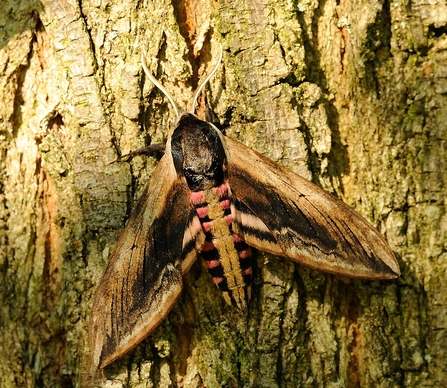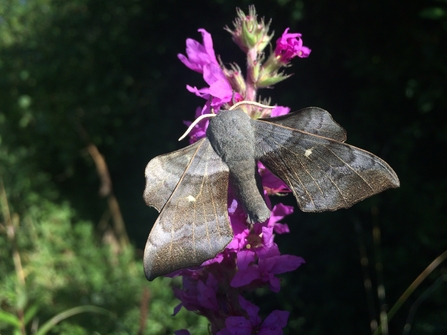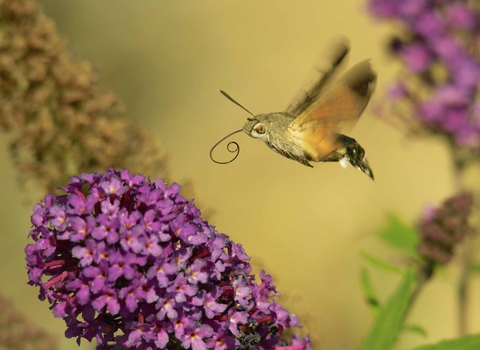Moths are amazing. They can fly during the day or at night. They can be incredibly colourful, or have such fantastic camouflage that they seem to disappear as soon as they land. They are also important pollinators, like bees and butterflies.
One of the best things about them is there are so many to discover. There are around 2,500 different moths in the UK! Some of the most impressive moths are known as hawk-moths.
It’s thought they were named hawk-moths because of their fast flight and long, curved wings, a bit like a hawk. In some parts of the world, they’re known as sphinxes, because their big, chunky caterpillars sometimes rear up like the Egyptian sphinx.
Let’s discover some of the UK’s hawk-moths!
Elephant hawk-moth © Tom Hibbert
Elephant hawk-moth
This pink and brown moth doesn’t look much like an elephant, but it’s caterpillar does look like an elephant’s trunk! Caterpillars feed on willowherbs and the pretty moths can sometimes be found close to these plants. They fly at night and feed on honeysuckle flowers. They’re often attracted to lights.

Hummingbird hawk-moth © Derek Moore
Hummingbird hawk-moth
It’s easy to see how they got the name hummingbird, as these marvelous moths fly in the day and feed on flowers. They even hover as they feed! They migrate from continental Europe so are often found in the south and at the coast. Look for them hovering around flowers on sunny days. They especially seem to like red valerian.

©Amy Lewis
Privet hawk-moth
The biggest hawk-moth you’re likely to see – their wingspan is around 12cm! Their brown wings hide a body with bright pink stripes. They fly at night and are often attracted to lights. If you’re really lucky, you might find one resting on a tree trunk or fence post.

Poplar hawk-moth © Tom Hibbert
Poplar hawk-moth
This hawk-moth has a habit of holding its wings at an odd angle, so it looks almost bow-shaped. It’s a greyish brown colour with bright chestnut patches on the top of its hind wings. They fly at night and often come to lights. The adults don’t eat, but caterpillars feed on poplar and willow trees.

Broad-bordered bee hawk-moth © Derek Moore
Broad-bordered bee hawk-moth
This is another day-flying hawk-moth, though it’s rarer than the hummingbird hawk-moth. It’s a fat, furry moth with clear patches on its wings that you can see right through! It likes to feed on flowers in woodland clearings, hovering whilst sticking out its long tongue. It’s caterpillars feed on honeysuckle plants.
Lime hawk-moth © Tom Hibbert
Lime hawk-moth
This moth is usually a lovely green colour, but that’s not why it got the name lime. It’s named for its caterpillars, which feed on leaves of lime trees, as well as a few other trees. Lime hawk-moths often live in cities, where lime trees have been planted in parks and along streets. Look out for them on tree trunks or visiting lights at night.

